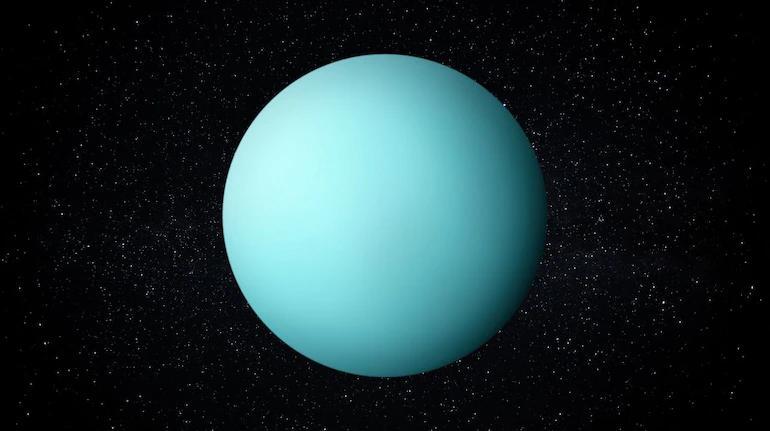
Uranus Generates Its Own Internal Heat: Study
For decades, scientists have been fascinated by the mystical planet, Uranus. With its tilted axis and icy surface, it’s no wonder that researchers have been eager to uncover the secrets behind this distant world. Recently, a groundbreaking study led by Dr. Xinyue Wang from the University of Houston has shed new light on Uranus’ internal dynamics, revealing that it generates its own internal heat. This finding challenges previous assumptions about the planet’s internal activity and has significant implications for our understanding of Uranus’ formation and evolution.
According to the study, published in the journal Geophysical Research Letters, Uranus emits 12.5% more heat than it receives from the Sun, which is a staggering 1.8 billion miles away. This internal heat is not a result of any external factors, such as solar radiation or tidal heating, but rather a residual effect from the planet’s formation.
Dr. Wang and her team used a combination of observations from Voyager 2, which flew by Uranus in 1986, and computer simulations to model the planet’s internal dynamics. Their findings suggest that Uranus is “still slowly releasing residual heat from its formation,” as Dr. Wang explained in a statement. This heat is thought to be the result of the planet’s rapid formation and the subsequent decay of radioactive elements in its core.
Voyager 2’s 1986 flyby of Uranus provided some of the first detailed observations of the planet’s atmosphere and magnetic field. However, the spacecraft’s instruments were not capable of measuring the planet’s internal heat. As a result, scientists assumed that Uranus was internally inactive and unusually cold. The new study, led by Dr. Wang, challenges this assumption and provides insight into Uranus’ internal dynamics.
The discovery of internal heat generation has significant implications for our understanding of Uranus’ evolution. The planet’s internal heat is thought to play a crucial role in shaping its atmosphere and magnetic field. The heat also helps to drive atmospheric circulation patterns, which in turn influence the planet’s climate.
“Investigating the internal heat of Uranus is crucial for understanding its thermal evolution and the processes that shape its atmosphere and magnetic field,” Dr. Wang explained. “Our study demonstrates the importance of considering the internal dynamics of Uranus in future research and provides new insights into the planet’s formation and evolution.”
The findings of Dr. Wang’s study have also raised new questions about the internal dynamics of other icy planets and moons in our solar system. The study’s results suggest that other similar bodies may also be generating internal heat, which could have significant implications for our understanding of their formation and evolution.
In conclusion, the study led by Dr. Xinyue Wang has provided a significant breakthrough in our understanding of Uranus’ internal dynamics. The discovery of internal heat generation challenges previous assumptions about the planet’s internal activity and has significant implications for our understanding of Uranus’ formation and evolution. As researchers continue to study the planet, we can expect to learn more about its internal dynamics and the processes that shape its atmosphere and magnetic field.
Source:
Wang, X., et al. (2025), Uranus’s internal heat budget and its implications for the planet’s thermal evolution, Geophys. Res. Lett., 52, e2025GL115660, doi: 10.1029/2025GL115660.
https://agupubs.onlinelibrary.wiley.com/doi/10.1029/2025GL115660






